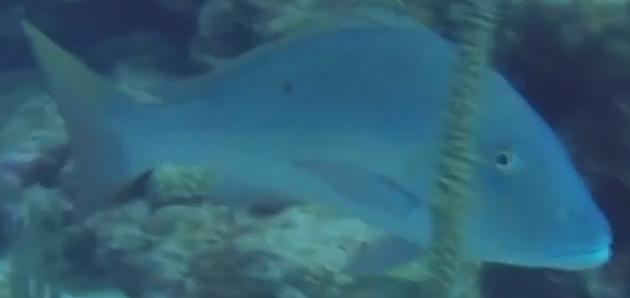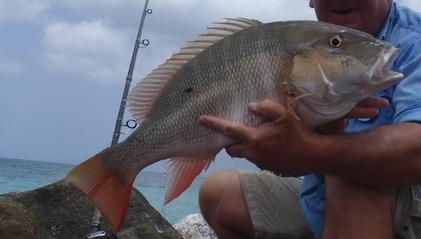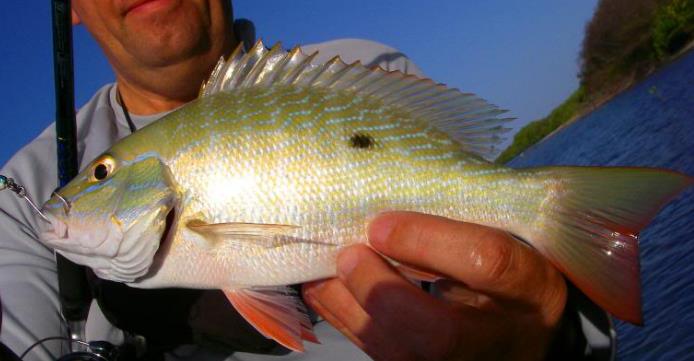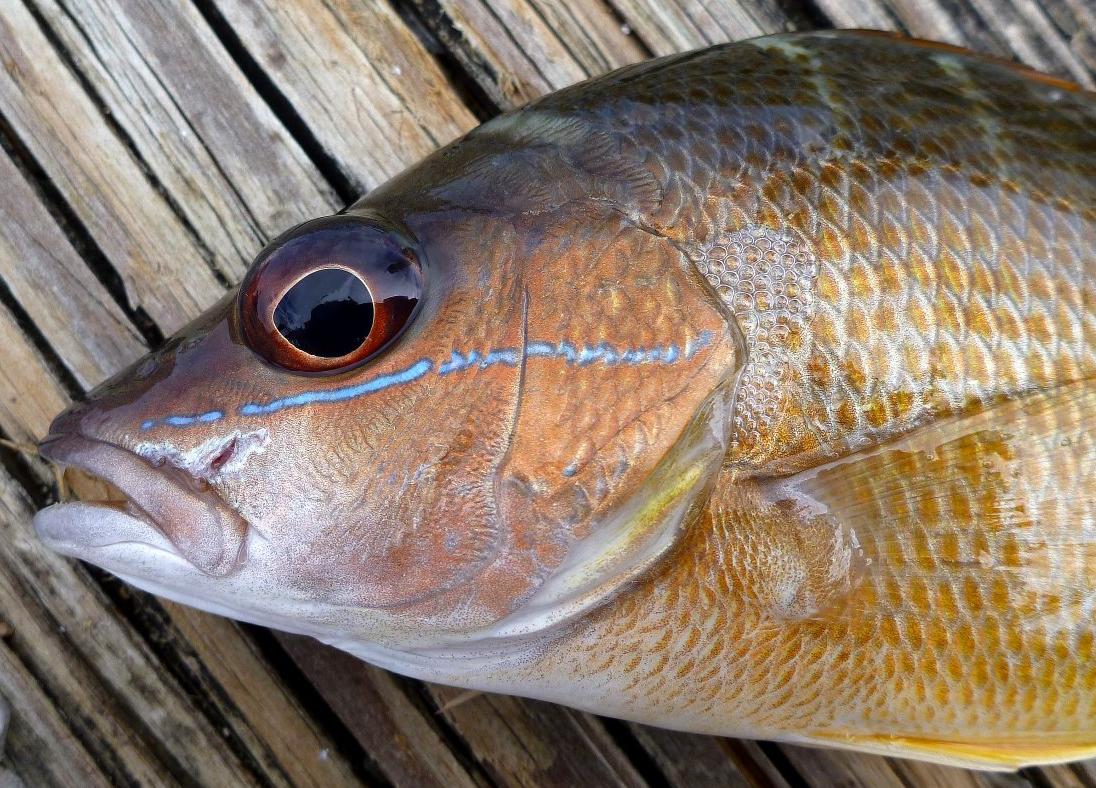



Lutjanus analis
| Ecological Descriptors |
||||
| Habitat | Size (cm)) | Diet | Behaviour | Sex |
| R, Co, (S) | 90 | Car | Sh, I | F |
Description:
Adult: Back and upper sides olive, lower parts whitish with red tinge. Upper body of resting fish may have series of narrow pale bars; iris red. Has a small dark spot just above lateral line below front part of soft dorsal, smaller in larger fish. Head has blue lines and spots below, before and behind eye. The fins are reddish, especially anal, lower part of tail and plevics. Rear edge of tail narrowly black.
Juvenile: The lateral line passes through the lower edge of the black flank spot, which is larger than in adults. Body has rows of bluish spots.
Ecology
This species occurs over reef, seagrass and rubble bottoms, usually between 25 and 95 m. Large adults usually among rocks and corals, while juveniles occur over sandy areas or seagrass beds. Forms small aggregations that disband during the night. Feeds both day and night on small fish, shrimps, crabs, cephalopods and gastropods.
Life Cycle:
Sexually mature at 40-50cm in length. Inshore spawning aggregations peak during the full moon. Pelagic eggs and sperm are released into the sea and the adults swim back offshore. Eggs hatch 20 hours after the fertilization, the larvae initially
using their yolk sac for food. Within 48 hours of hatching 10mm feeding larvae are formed, and move inshore into a habitat that would protect them from their predators. In this habitat, they feed and grow into juveniles. Size at 50% maturity is estimated at 33 to 40cm (3 years).
Adult: Back and upper sides olive, lower parts whitish with red tinge. Upper body of resting fish may have series of narrow pale bars; iris red. Has a small dark spot just above lateral line below front part of soft dorsal, smaller in larger fish. Head has blue lines and spots below, before and behind eye. The fins are reddish, especially anal, lower part of tail and plevics. Rear edge of tail narrowly black.
Juvenile: The lateral line passes through the lower edge of the black flank spot, which is larger than in adults. Body has rows of bluish spots.
Ecology
This species occurs over reef, seagrass and rubble bottoms, usually between 25 and 95 m. Large adults usually among rocks and corals, while juveniles occur over sandy areas or seagrass beds. Forms small aggregations that disband during the night. Feeds both day and night on small fish, shrimps, crabs, cephalopods and gastropods.
Life Cycle:
Sexually mature at 40-50cm in length. Inshore spawning aggregations peak during the full moon. Pelagic eggs and sperm are released into the sea and the adults swim back offshore. Eggs hatch 20 hours after the fertilization, the larvae initially
using their yolk sac for food. Within 48 hours of hatching 10mm feeding larvae are formed, and move inshore into a habitat that would protect them from their predators. In this habitat, they feed and grow into juveniles. Size at 50% maturity is estimated at 33 to 40cm (3 years).
Mutton Snapper



(C) Steve Pitts
Mutton Snapper



85



Mutton Snapper
Mutton Snapper
(C) Steve Pitts
88
87
90


